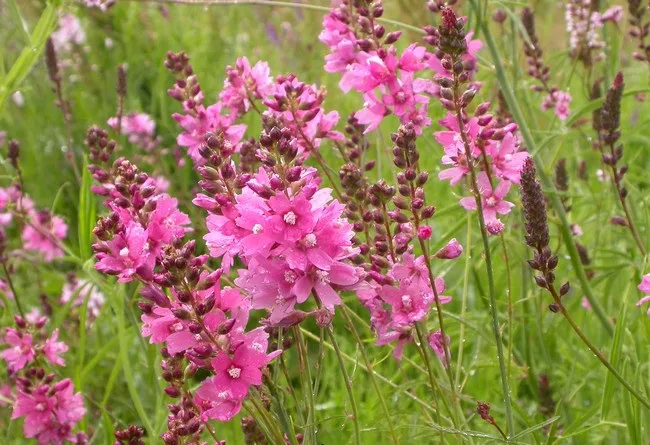BLEWETT PASS — On a rainy June Wednesday, a group of scientists, students, volunteers, and wildflower enthusiasts gathered under the guidance of David Wilderman to track down a rare wildflower that calls the Cascades home.
This particular flower, the Wenatchee Mountains checker-mallow, exists only in a small region of central Chelan County, nestled in the meadows along Blewett Pass. Each year, a dedicated team from the Washington Department of Natural Resources (DNR), the University of Washington, the U.S. Forest Service, and other organizations ventures out to count these elusive plants and assess the health of their populations.
Wilderman, an ecologist with DNR’s natural areas program, explained that this species, Sidalcea oregana var. calva—a unique variant of the checker-mallow found throughout the Pacific Northwest—likely evolved due to the geographical isolation of the Wenatchee Mountains meadows.
“The prevailing theory is that these areas weren’t heavily glaciated,” Wilderman noted. “During the last ice age, the main glaciers didn’t extend as far south, sparing this region from the harsh conditions. As a result, species like the Wenatchee Mountains checker-mallow managed to survive in this isolated habitat.”
This plant, which can reach up to two feet in height, boasts pink flowers and three-inch leaves. One of the main locations for the annual count is Camas Meadows, part of the checker-mallow’s natural range. Survey teams mark each plant with landscape flags to ensure accurate counts and to alert hikers to avoid trampling the rare species.
“It’s a bit like a treasure hunt,” said Andrea Cummins, volunteer coordinator with the University of Washington’s Rare Plant Care and Conservation office. “We often trek through dense brush, but spotting one of these plants is incredibly rewarding. Their rarity is what makes the find so special.”
Beyond its rarity, the Wenatchee Mountains checker-mallow plays a crucial role in the local ecosystem.
“There are significant pollinator relationships tied to this plant,” Cummins explained. “We’re working hard on both monitoring and reintroducing this species to ensure its survival.”
Local conservation efforts have not gone unnoticed. Previous initiatives to monitor the checker-mallow earned recognition from the U.S. Fish and Wildlife Service’s Recovery Champions award, which celebrates efforts to protect and recover endangered plant and animal species.
Looking ahead, Chelan County’s Natural Resources office is planning a significant hydrology project in Camas Meadows. The goal is to restore streamflows and improve moisture conditions for native plants like the checker-mallow. The recent survey, which recorded 3,140 individual checker-mallows across three areas, will guide the county in avoiding disturbance to established plant populations during the project.
Efforts to cultivate new checker-mallows within their native habitat continue, though challenges remain. “Growing them in a greenhouse is tricky,” Cummins admitted. “This plant has specific requirements that we’re still trying to fully understand. Its rarity means we have much more to learn.”


